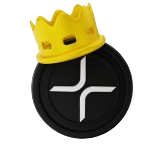Introduction
Are you new to drumming and eager to expand your knowledge about cymbals? You’ve come to the right place! Whether you’re a beginner or looking to refine your skills, understanding the different types of cymbals is crucial. Today, we’ll dive into the fascinating world of scimitar drum meaning, a unique and mesmerizing component of any drum set.
In this comprehensive guide, you’ll discover the various types of cymbals, their specific functions, and tips on choosing the right ones for your playing style. By the end of this post, you’ll have a solid grasp of cymbal basics and be well-equipped to make informed decisions as you build your drum set.
Understanding scimitar drum meaning
scimitar drum meaning, also known as cymbals, are essential percussion instruments with a rich history. They add texture, depth, and character to your music, making your drumming experience more dynamic and exciting. Cymbals come in different shapes, sizes, and materials, each producing a unique sound.
What Are scimitar drum meaning?
scimitar drum meaning are metallic percussion instruments that produce sound when struck with drumsticks, brushes, or mallets. They are typically made from a bronze alloy, which gives them their distinct sound qualities. The name “scimitar” refers to the curved shape of some cymbals, resembling the traditional Middle Eastern sword.
The History of scimitar drum meaning
Cymbals have a long and fascinating history, dating back thousands of years. They were first used in ancient civilizations such as China, Turkey, and Egypt for religious ceremonies and military purposes. Over time, cymbals evolved and became integral to various musical genres, from classical to jazz and rock.
Why Are They Called scimitar drum meaning?
The term “scimitar drum meaning” is derived from the curved shape of certain cymbals, similar to the scimitar sword. This unique shape allows for a wide range of tonal possibilities, making them versatile and valuable to any drum set.
Types of Cymbals
Now that you have a basic understanding of scimitar drum meaning drums let’s explore the different types of cymbals and their specific functions.
Ride Cymbal
The ride cymbal is one of the most essential cymbals in a drum set. It is typically the largest and thickest cymbal, providing a clear and defined sound. The primary purpose of the ride cymbal is to keep time and play accents, making it a crucial component for maintaining rhythm.
Functions of a Ride Cymbal
- Keeping time in various musical styles
- Providing a steady rhythm with a clear “ping” sound
- Adding accents and dynamics to your playing
Choosing a Ride Cymbal
When selecting a ride cymbal, consider factors such as size, weight, and material. A larger, heavier cymbal will produce a more pronounced sound, while a smaller, lighter cymbal will have a brighter tone. Experiment with different options to find the one that suits your playing style.
Crash Cymbal
The crash cymbal is another essential component of a drum set, known for its explosive and dramatic sound. It is thinner than a ride cymbal and produces a bright, shimmering tone when struck.
Functions of a Crash Cymbal
- Creating dramatic crashes and accents in your music
- Adding excitement and energy to your playing
- Enhancing the overall dynamics of a song
Choosing a Crash Cymbal
When choosing a crash cymbal, consider the size, thickness, and material. A larger, thinner cymbal will produce a more explosive sound, while a smaller, thicker cymbal will have a shorter sustain. Find the right balance to complement your drum set.
Hi-Hat Cymbals
Hi-hat cymbals are a pair of cymbals mounted on a stand, played with a foot pedal and by striking them together with drumsticks. They are incredibly versatile and used for keeping time, playing accents, and creating intricate hi-hat patterns.
Functions of Hi-Hat Cymbals
- Keeping a steady rhythm with the foot pedal
- Adding accents and dynamics to your playing
- Creating intricate hi-hat patterns and grooves
Choosing Hi-Hat Cymbals
When selecting hi-hat cymbals, consider the size, weight, and material. A larger, heavier pair will produce a more pronounced sound, while a smaller, lighter pair will have a brighter tone. Experiment with different options to find the perfect fit for your playing style.
China Cymbal
The China cymbal is a unique cymbal with a trashy, unpredictable sound. Often used for accents and effects, it adds a distinct character to your drumming.
Functions of a China Cymbal
- Creating trashy, explosive accents in your music
- Adding unique effects and textures to your playing
- Enhancing the overall dynamics of a song
Choosing a China Cymbal
When choosing a China cymbal, consider the size, thickness, and material. A larger, thinner cymbal will produce a more explosive sound, while a smaller, thicker cymbal will have a shorter sustain. Find the right balance to complement your drum set.
Splash Cymbal
The splash cymbal is a small cymbal that produces a short, bright sound. It is often used for accents and effects, adding a touch of sparkle to your drumming.
Functions of a Splash Cymbal
- Creating short, bright accents in your music
- Adding subtle effects and textures to your playing
- Enhancing the overall dynamics of a song
Choosing a Splash Cymbal
When selecting a splash cymbal, consider the size, thickness, and material. A smaller, thinner cymbal will produce a more pronounced sound, while a larger, thicker cymbal will have a longer sustain. Experiment with different options to find the perfect fit for your playing style.
Choosing Cymbals
Choosing the right cymbals for your drum set can be challenging, especially with so many options available. Here are some tips to help you make an informed decision.
Sound Preference
Consider your personal sound preference when choosing cymbals. Do you prefer a bright, shimmering tone or a dark, warm sound? Experiment with different options to find the one that suits your playing style.
Playing Style
Your playing style will also influence your choice of cymbals. Do you play in a band or as a solo artist? Are you a heavy hitter or a light touch player? Consider these factors when selecting cymbals.
Budget
Budget is another important factor to consider when choosing cymbals. Start with a basic set of cymbals (hi-hats, ride, crash) and expand your collection later. Look for high-quality options within your budget to ensure you get the best value for your money.
Maintaining Your Cymbals
Proper maintenance is crucial for keeping your cymbals in top condition. Here are some tips to help you care for your cymbals.
Cleaning
Regularly clean your cymbals to remove dirt, grime, and fingerprints. Use a soft cloth and a mild cleaning solution to gently wipe the surface of your cymbals. Avoid using abrasive cleaners or scrubbing too hard, as this can damage the finish.
Storage
Store your cymbals in a cool, dry place to prevent damage from moisture and temperature fluctuations. Use cymbal bags or cases to protect them from scratches and other damage when not in use.
Handling
Handle your cymbals with care to prevent damage. Avoid dropping or striking them too hard, as this can cause cracks and other damage. Use cymbal stands and mounts to secure them during play.
Chamomile Tea: The Fragrant Brew in Traditional Medicinehttps://fmorion891.com/chamomile-tea-the-fragrant-brew-in-traditional-medicine/
Conclusion
Understanding the different types of cymbals and their specific functions is crucial for any aspiring drummer. Whether you’re a beginner or looking to refine your skills, this guide provides valuable insights and practical tips to help you make informed decisions as you build your drum set.
FAQs
1. What are the main types of cymbals?
The main types of cymbals include ride, crash, hi-hat, China, and splash cymbals, each with distinct sounds and functions in drumming.
2. How do I choose the right cymbals for my drum set?
Consider factors like sound preference, playing style, and budget. Experiment with different sizes and materials to find the perfect fit.
3. How should I maintain my cymbals?
Regular cleaning, careful handling, and proper storage in cool, dry places can help maintain your cymbals in top condition.
4. What is the role of hi-hat cymbals in drumming?
Hi-hat cymbals are versatile, used for keeping time, adding accents, and creating intricate patterns in various music styles.
5. Why is the China cymbal unique?
The China cymbal produces a trashy, explosive sound, making it ideal for creating distinctive accents and effects in music.

